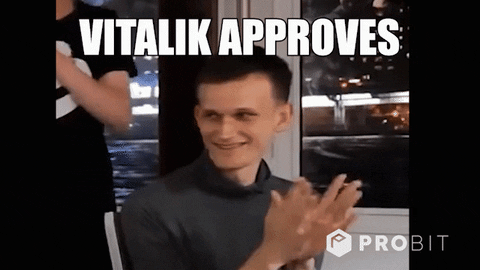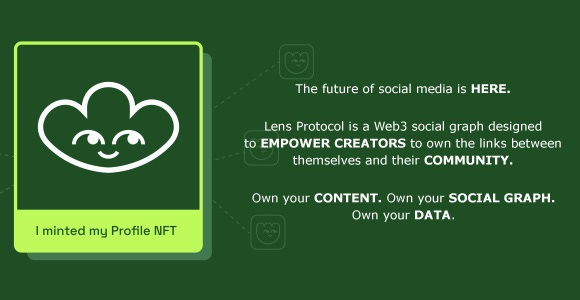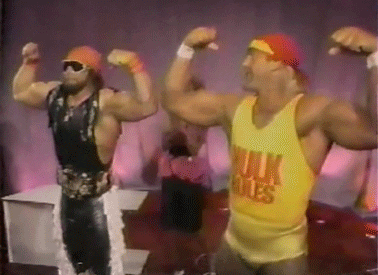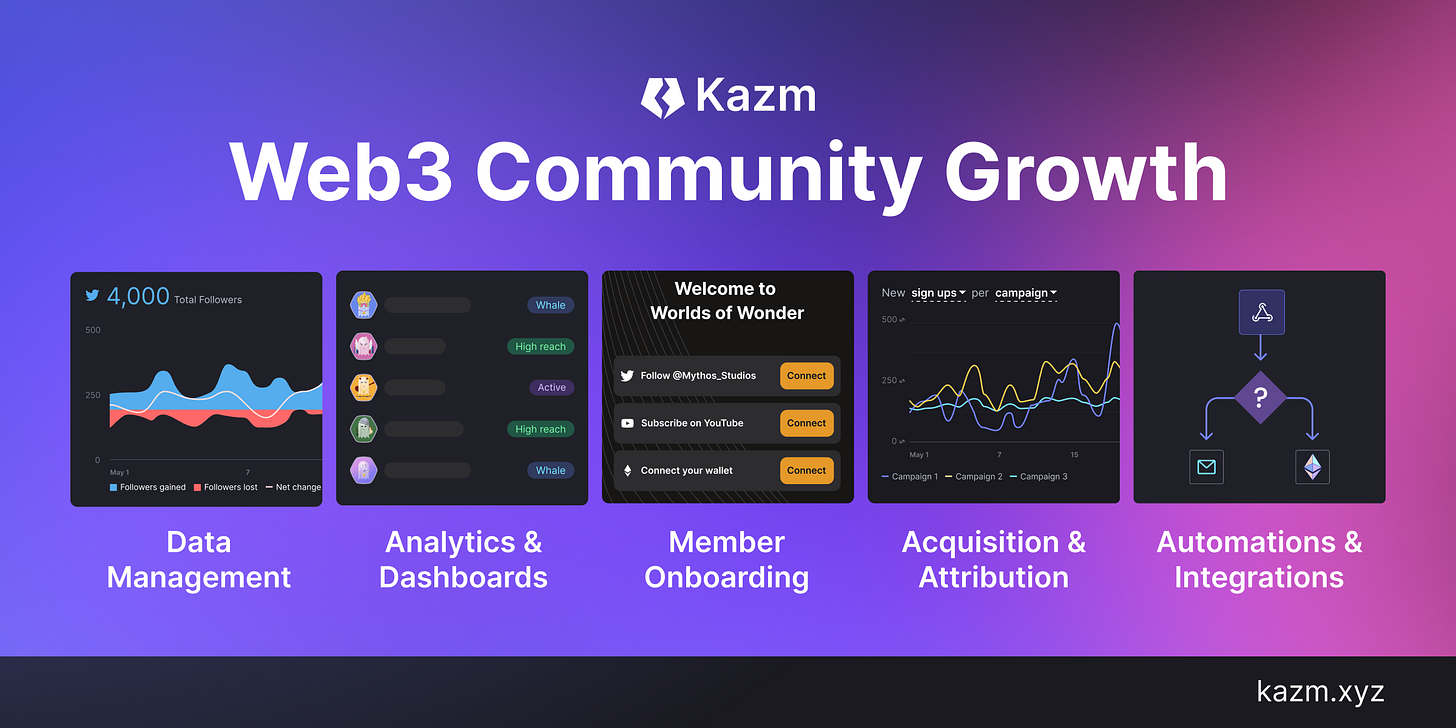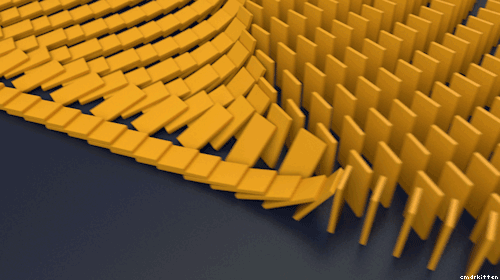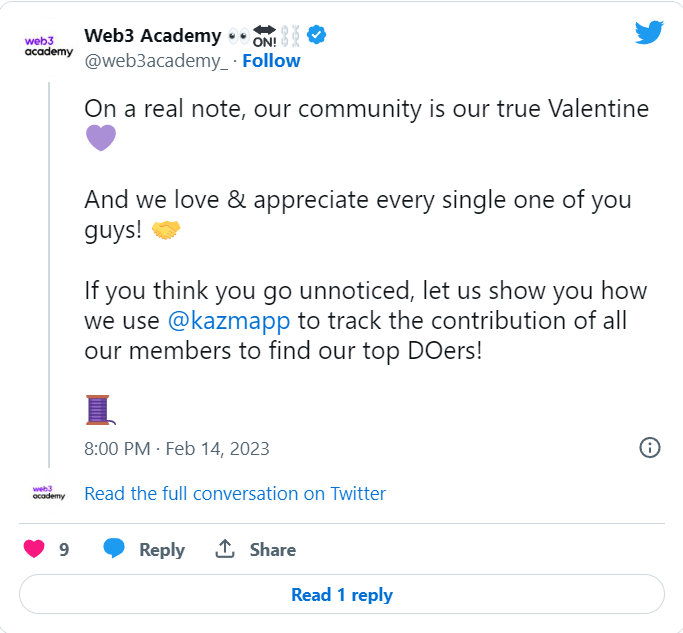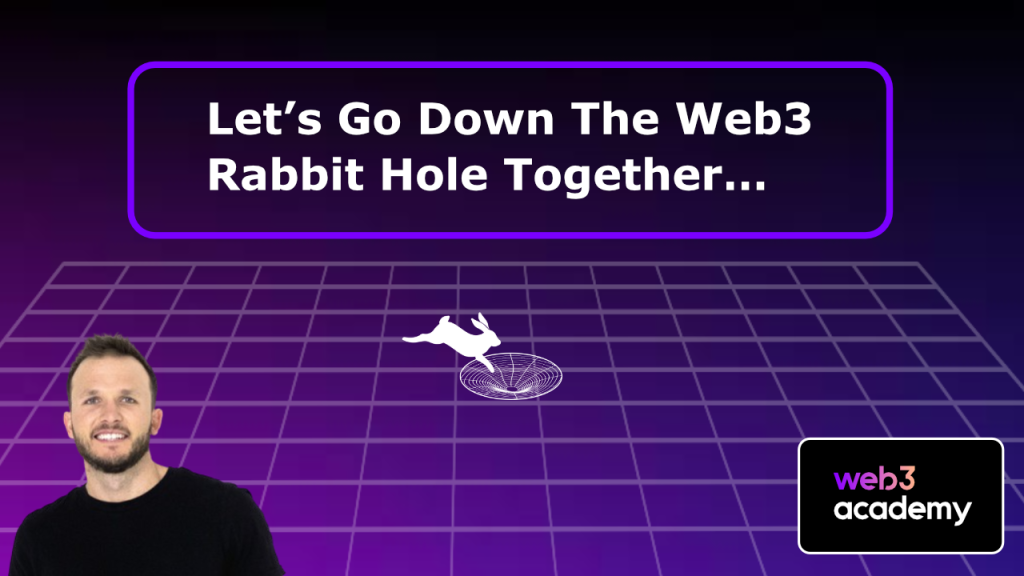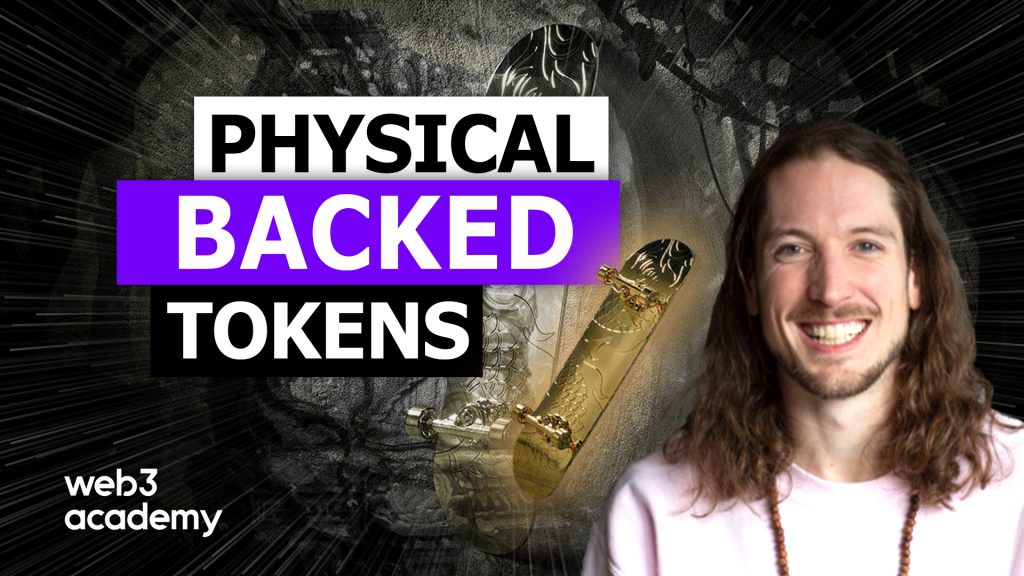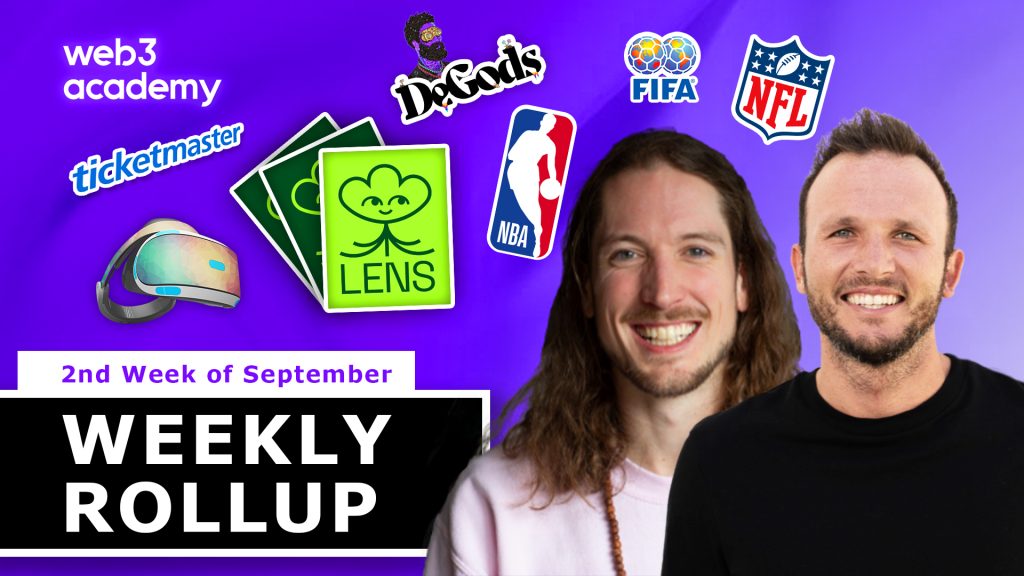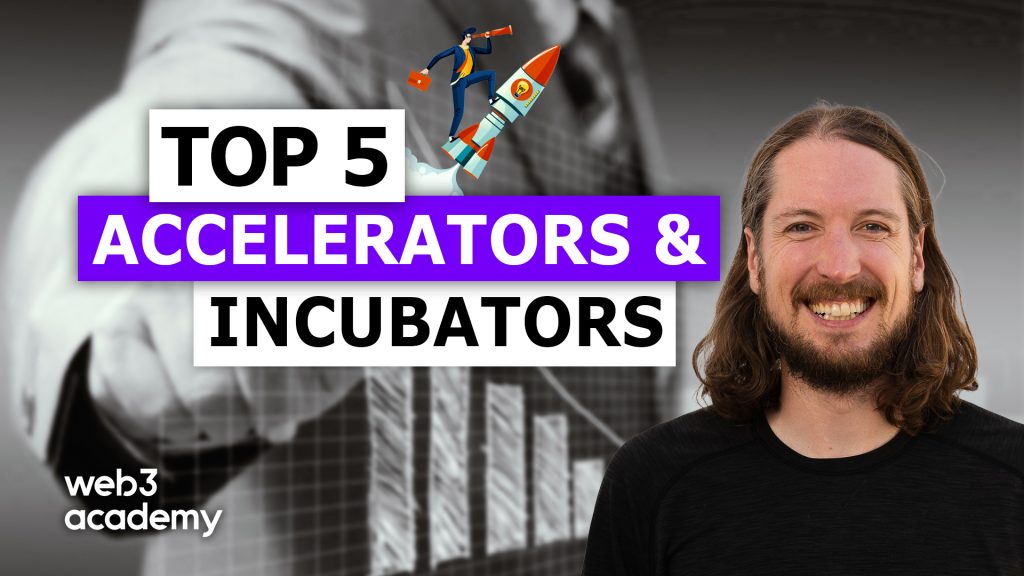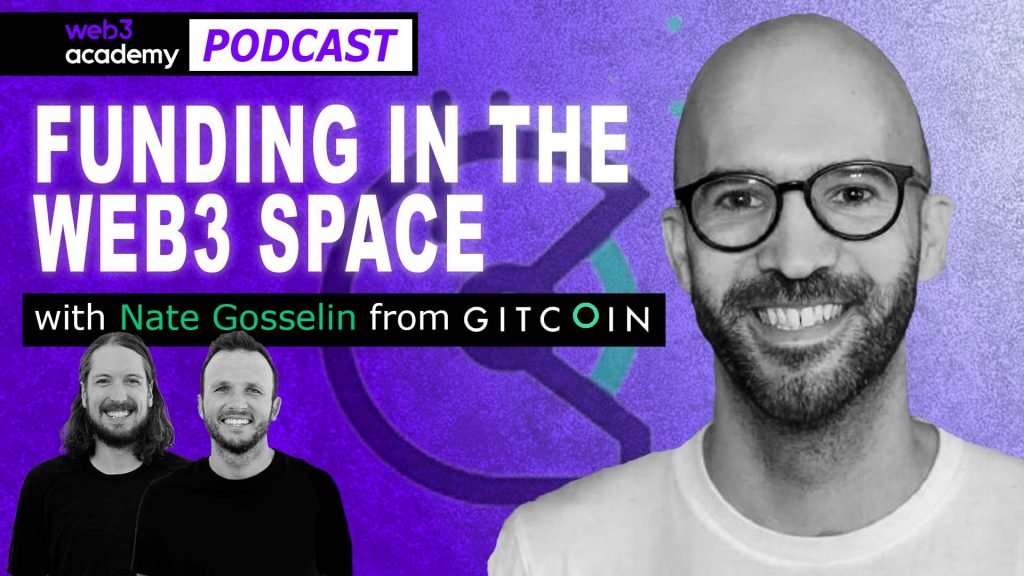
How Gitcoin is Disrupting the Way We Fund Public Goods
The world needs this...
If you’re not into reading, LISTEN! Go to your favorite platform to get the lowdown on how blockchain helps fund public goods 👇
GM DOers!
The world needs public goods.
I don’t think there’s any debate here.
Parks, clean air, open-source software, etc.
These are all shared resources that make our lives better.
But here’s the problem.
There’s limited revenue in public goods. So they are often massively underfunded.
But that’s all about to change thanks to blockchain, the mind of Vitalik Buterin and the team at Gitcoin.
Today we’re going to talk about:
- What are public goods and why do we need them?
- The web3 innovation flywheel needs open-source software
- How does Gitcoin funding work? WTF is Quadratic Funding?
- Gitcoin’s partnership with UNICEF
Say it with me… Public goods are just so damn good 😊
👉 Brought to You by Lens: The Future of Social Networking 👀
What Are Public Goods and Why do we Need Them?
Public goods are goods or services that are non-excludable and non-rivalrous in nature.
Non-excludable means that it is difficult or impossible to exclude people from using the good, while non-rivalrous means that the consumption of the good by one person does not diminish the availability or quality of the good for others.
Examples of public goods include clean air, national defense, scientific research, and public parks.
These goods are often provided by governments or non-profit organizations because they are not typically profitable for private companies to produce and distribute.
Public goods are important because they provide benefits to society as a whole, and not just to individuals or specific groups.
However, because they are difficult to monetize and typically lack a direct revenue stream, public goods are often underfunded and can struggle to attract the resources they need to be successful.
This is where innovative funding mechanisms like Gitcoin can play a role in helping to fund important public goods.
At Web3 Academy, we’re massive fans of a particular public good… the blockchain.
Why?
Because it’s what allows us to 👀🔛⛓️ to determine which business models & technologies are winning in web3.
Oh, and we deliver our findings in a digestible report each Thursday at 9AM EST.
Wanna receive tomorrow’s report?
Then Go PRO Today
P.S: Tomorrow, we’re breaking down the great NFT marketplace war that’s on-going. Who’s winning? Who’s losing? You’ll find out tomorrow. If you’re a PRO 😉
Innovation Needs Open-Source Software
Open-source software is also considered a public good. One which can can provide many benefits to society, including increased innovation, collaboration, and accessibility.
It can be used to build new technologies and products, improve existing systems, and promote transparency and accountability in various industries.
Because open-source software is often developed by communities of individuals who are passionate about the technology and its potential to make a positive impact, it is not always motivated by financial gain.
Open source software can benefit greatly from composability, which is the ability to combine software components or modules to create new applications or services.
Composability allows developers to leverage existing open source components and build on top of them, rather than starting from scratch every time.
This can save time, reduce development costs, and improve the overall quality of software by allowing developers to focus on creating new features and functionality, rather than reinventing the wheel.
The Web 2.0 tech giants have rugged our composability in order to boost corporate profits through data hoarding, patent protection, and the development of products that utilize incompatible tech stacks.
This has also resulted in high switching costs that discourage competitors and contribute to a fragmented system, making it difficult to combine components for added value.
However, change is upon us.
Networks that were previously closed are now open.
Software development is complete in a shorter timeframe because the features for dApps don’t need to be developed from the ground up.
But in order for this to continue we need funding mechanisms that ensure open-source software remains a public good.
In other words we need Gitcoin.
🤝 Together with Kazm: The All-In-One Tool for Building a Thriving Web3 Community
Are you building a community in web3? Then you need Kazm, the tool we use to onboard our members and launch data-driven campaigns that optimize growth and engagement.
How Does Gitcoin Funding Work?
Gitcoin funds projects through the use of quadratic funding (QF). An incredibly powerful funding mechanism which has led to a domino effect of compounding returns.
QF is a form of crowdfunding that matches donations from everyday people with a pool from larger donors.
What makes it special is that it uses a mathematical formula to ensure that the projects that receive support from the most significant number of people (rather than the greatest number of donations) gain more matched funds.
In the case of Gitcoin, an ecosystem partner creates a fund to discover innovators who can develop solutions and drive the growth of the ecosystem. Through the use of quadratic funding (QF), anyone can participate in the distribution of these funds.
Gitcoin awards developers who create unique products for the ecosystem, which leads to further growth. As ecosystem partners become more satisfied with the results, they return with increased support, allowing more developers to receive funding.
This virtuous cycle continues, creating an internet built by all of us, for all of us.

SOCIALS
Tweet of the Week
Read the thread above to get insights into how we use one of our favorite web3 tools to track, engage & build our awesome community.
Allo Protocol, UNICEF and Basketball
Next week at ETH Denver Gitcoin is launching the Grants Stack (powered by Allo Protocol), which aims to decentralize funding access, empowering any community to run their own grants program.
The first pilot of Allo Protocol (previously Grants Protocol) was in partnership with UNICEF in December 2022.
Through this partnership more than 15,500 individuals contributed 67.5 ETH and $15,000 in DAI to 10 projects operating in the area of financial inclusion and literacy, agriculture, education and public health.
Allo Protocol uses blockchain to make it easier for organizations to identify and incorporate community signals into funding decisions.
It also makes it easier for communities to see where funds are distributed in the most transparent way possible.
During our chat, Nate Gosselin — Allo Protocol Product Lead — presented a hypothetical example of a basketball organization using the Grants Stack.
The Grants Stack is like the no-code version of Allo Protocol.
Imagine there’s a basketball organization (lets call it Nate Ball) with $1M in funding to rebuild/improve community basketball courts around the world.
How do they decide which courts to give money to? Once the courts are rebuilt how do they maintain them and ensure the community is actually using them?
Through Quadratic Funding, Nate Ball could get these answers from the community members themselves.
Obviously, the community that has the most amount of donors is also likely to be the community that will benefit most from the court.
Not only that but donors are more likely to take care of the court and maximize it’s usage by say, organizing leagues and camps for kids.
Whether it’s NFT hodlers or Gitcoin grant donors we all know that those who invest their money are the most engaged community members.
In this way QF ensures that funds are allocated based on community impact not just one person who’s got the deepest pockets.
Whether we’re talking about basketball courts or building a project on top of your favourite layer 2. We all have projects that we believe in.
So if you’re a community leader and you want to support projects building in your ecosystem I recommend using Gitcoin.
Not only will QF help you decide which projects to allocate funds to, it will help you engage your community in these projects in a meaningful way.
And if you’re at ETH Denver give a high five to the Gitcoin team for me! 🙌

FOR THE DOERS
Take Action & Level Up
READ
Catch up on Monday’s Deep Dive: Is Decentralized Cloud Storage the Next Big Web3 Industry?.
JOIN
Tired of not having a web3 playbook? Then join Web3 Academy PRO today to enjoy weekly on-chain reports that show you which businesses, business models, and tactics are winning in web3.
FOLLOW
We’re only ~150 followers away from 10k. Help us beat Kyle to the magic number by following us on Twitter. .




